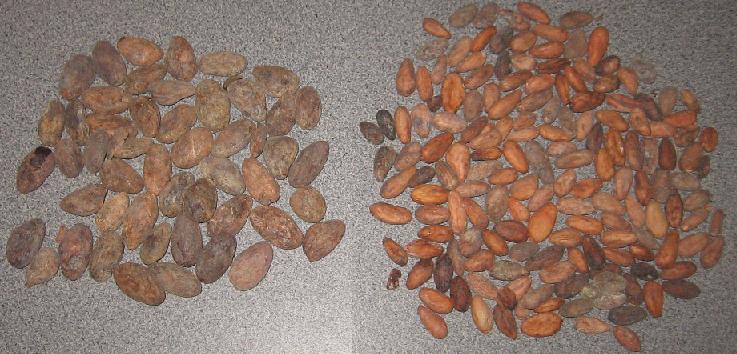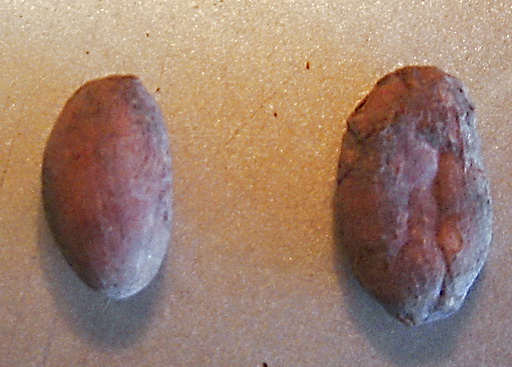You said you should roast criollo delicately but you also say in some of your reviews for criollo beans that they should be roasted fully. Isn’t that a contradiction?
Thanks for the question. That is a great follow up to last week’s question. To answer your question, no, it’s not a contradiction. You knew I would say that of course. So, why isn’t it? That’s what we are going to talk about.
It’s really that we are talking about TWO different things. How the heat is applied (delicately/aggressively) and how much you roast the beans (light/dark). As soon as you grasp we are talking about two things, and that they are not related, the apparent contradiction disappears.
To give an example that you are probably more familiar with, think about the two extremes of the slow simmer/braise of a piece of meat vs tossing it on a hot grill. The braise is cooking it delicately. The grilling is cooking it aggressively. In theory, both can be rare, medium or well done. And that is (mostly) independent of how you cook them. But that is theory.
The reality is that it is kind of hard to cook something slow and rare. You CAN do it, but I personally can’t think of a single time in cooking that I would want to. Every instance I can think it could be applied (rare gentle cook hamburger, rare braised steak, barely sautéed onions) the result usually isn’t termed ‘rare’. It’s under done and lacking in flavor. Every single one of those would do so much better cooked aggressively for a short amount of time. Seared hamburger. Blackened steak. Fajita style sizzling onions! They are are all still lightly cooked, but that heat transformed them to something more instead of leaching something away. Given that, I would hold that it is a ‘rule’ in general for cooking and that would apply to ‘cooking’ cocoa beans.
In the same way different meats need different cooking methods, different cocoa beans benefit from the different roasting styles. We will disregard meats that generally should be fully cooked (pork, chicken, etc) and just take different cuts of beef as an example.
Any prime cut of meat can, and some would argue, should be cooked quickly. The goal is to cook it, but not tenderize or flavor it. It’s basically going to let the flavor shine through with the sharp heat lending a hand in alchemical transformation. This would be like a tenderloin, fillet mignon and rib eye. Basically, it does not react in a negative manner to hot fast cooking and really benefits from it. If you were to slow cook it, it might still be good, but it is going to be too tender (since it was already tender) and there is a good chance a lot of those delicate flavors are going to ‘cook out’.
On the other hand, there are meats like bottom round roasts, ‘stew meat’, brisket and flank steaks that are going to turn into shoe leather if you try to cook them fast, but a slow braise or simmer will tenderize and bring out the flavor.
And then there are those cuts that you can treat many ways. Tri-tip comes to mind. You can give it a slow medium roast, you can slice it thin and grill it or even braise it and it will come out fine (but different) for each method.
Cocoa beans are similar. Except there is a major difference. In meat, the ‘quality’ expensive cuts are cooked fast and hard and the poorer cuts are slow cooked. Do NOT think of cocoa that way in either quality nor type. Get that out of your head. Many people think of Criollo as the prized ‘quality’ bean and Forastero and the ‘other’ bean. The reason in both cases is really due to supply and demand and not because of how they are cooked. Criollo and filet mignon are both ‘rare’ and so are prized. And there is lots of Forastero and lots of stew meat per cow. It‘s that simple.
That said, over the years I have found that each type of beans benefits from a certain style of roasting. A particular profile if you will.
Forastero takes a more aggressive roast just great. And Criollo you want to treat a bit more gentle, with Trinatario bridging the gap and being the chameleon.
Now we can talk about roast lever. Light, medium or heavy. How much you cook them is dictated by personal preference. You can have a light roast, a medium roast or heavy roast. Except that you need to keep in mind the same ‘rule’ we saw above. You should not try and slow/delicately roast a bean AND try and keep it ‘rare’/light. In my experience what you end up with is analogous to crunchy warm wet onions….which I personally find rather insipid.
What if you want ‘rare’ criollo? I guess I would ask you why. If you only like rare meats, then you probably don’t want to pick a brisket that requires a long slow cook. If you do, then your options are rare and tough or fully cooked and tender. Basically I am trying to reiterate that ‘delicate’ and ‘rare’ are two different things. I would instead suggest that you want your criollo delicately roasted, but not lightly roasted.
So, to review these are the combinations I’ve found work well
Criollo, delicate to moderate heat, medium to heavy roast.
Trinatario, delicate to aggressive heat, light to heavy roast. Noting the more delicate you roast, the heavier you should roast.
Forastero, medium to aggressive roast, light to heavy roast with the same inverted caveat as the Trinatario.
Finally, one final thing I will probably touch more on later. Each type of bean’s roast level is at a different temperature, which is kind of evil. What I mean by that is light, medium and heavy are relative to each type of bean in regards to temperature.
Criollo is light somewhere around a bean temperature of 235 F and heavy around 270 F
Trinatario is light around 250 F and heavy around 285F
Forastero is light around 260 and heavy can go as hot as 310 F in some instances.
What that means is it’s difficult to say ‘take it to a medium roast’ without knowing what type of bean you are talking about. And often we don’t know the exact genetics. But it is also hard to say ‘roast to 265 F’ as many people don’t have access to set ups that allow accurate bean temperatures. Which is what makes it so challenging to teach you, my faithful reader, how to roast with words alone.
In person, light, medium and heavy roasts have pretty distinct aromas. And likewise, they have pretty distinct flavors. But they don’t translate great in words. You have to learn and experience them on your own. What that means is that you should take notes and try to apply the concepts that I’m trying to convey and keep it relative to YOUR set up.
As one very brief example, say you roast some Nicaraguan (a solid Trinatario) in the oven until you’re your IR thermometer says it’s 270 F, but the resulting chocolate is over roasted to your taste. Then you know in your system my 285 F is around your 270 F and so you should try the next roast to 255 F or 15 F lower.
Go forth and roast and eat chocolate. And don’t forget to take those notes.
I hope that clears up why delicate vs fully roasted are not contradictions.









 This time the roasted is on the right. And for those that want to know, this was done on P1, 1 lb setting, 16:15 minutes on the Behmor. 2.25 lb roast size.
This time the roasted is on the right. And for those that want to know, this was done on P1, 1 lb setting, 16:15 minutes on the Behmor. 2.25 lb roast size.